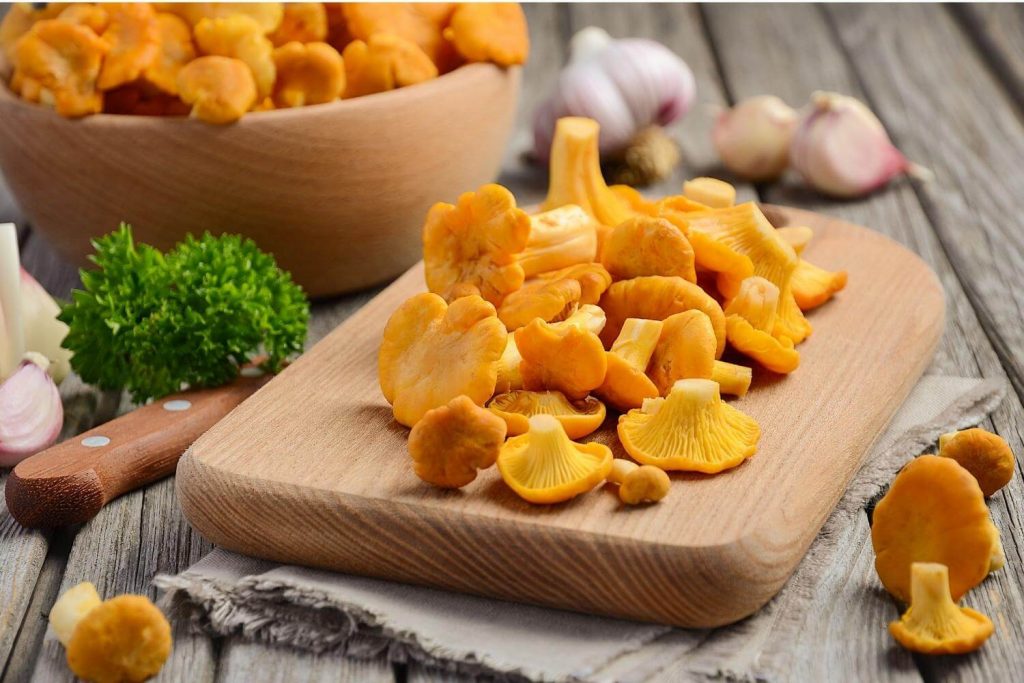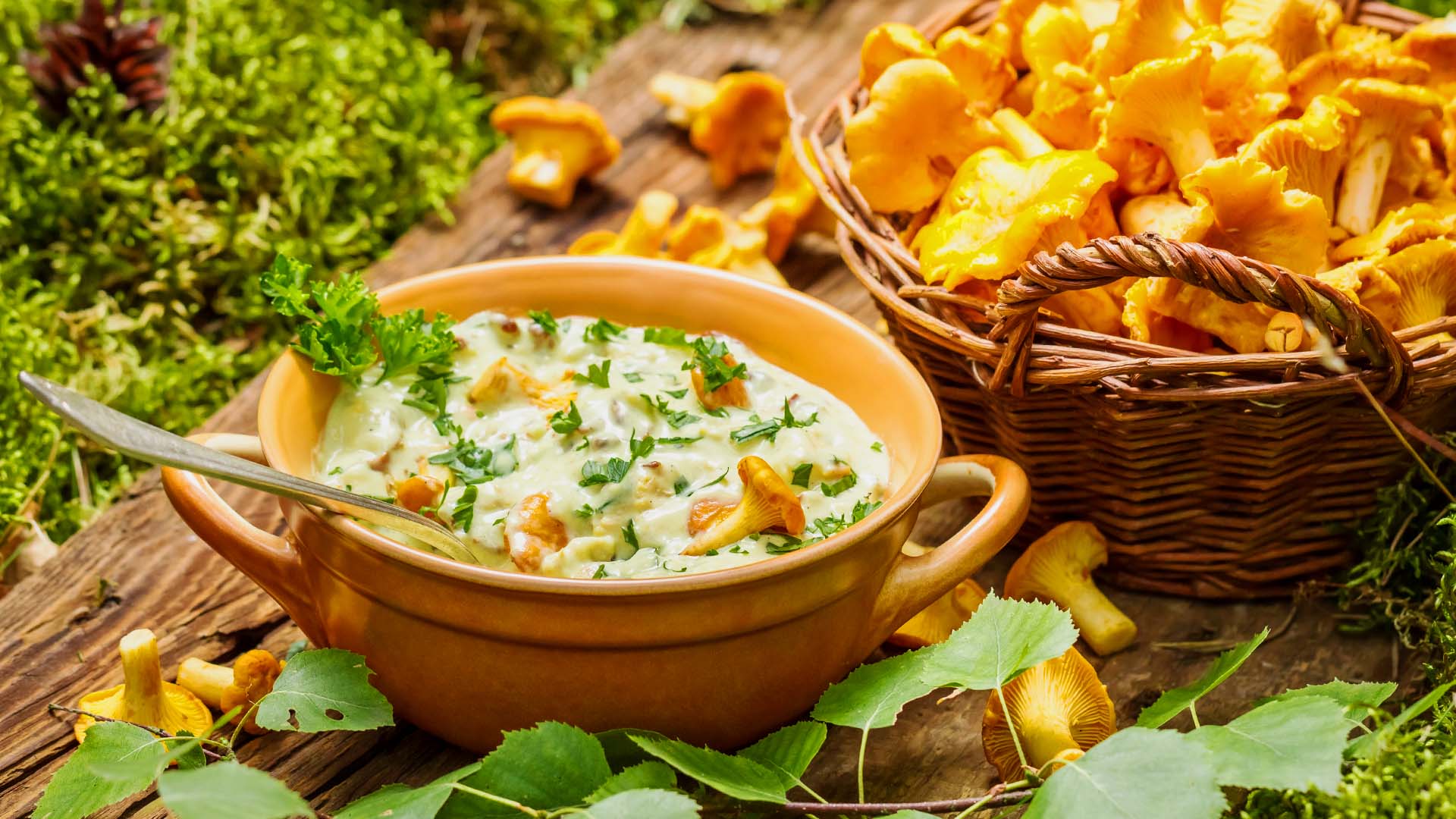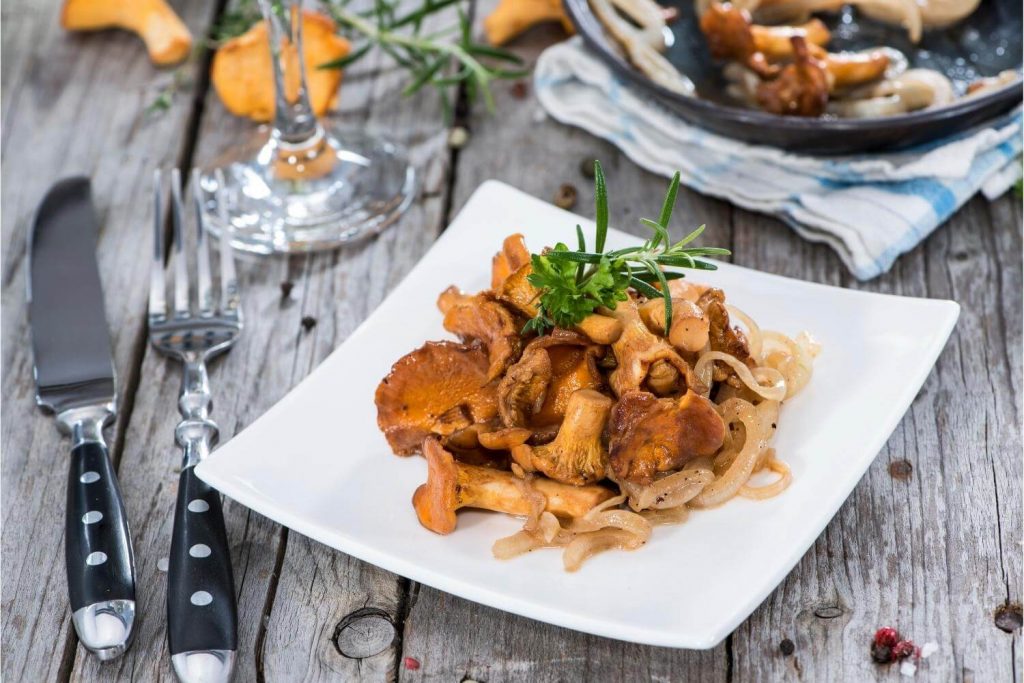Chanterelles Rarity, Flavor & Texture in One Perfect Mushroom
Chanterelle mushrooms are the golden stars of the forest, sensational in looks and taste alike. We’ll talk about their remarkable health benefits, what they taste like, how to store them, and all the other qualities that make them so popular with chefs!

Sculpted like a funnel, this mustard-yellow fellow is a well-received sensation in any specialty restaurant. But what places Chanterelles among the most popular species of wild edible mushrooms?
Unique Growing Conditions
First, the unique growing environment of Chanterelle mushrooms makes it impossible to commercially cultivate them. And this is precisely why they are highly seasonal, scarce, and thus expensive ingredients. Chanterelles are mycorrhizal fungi, as in mushrooms that grow in a symbiotic partnership with other plants. As you might have guessed, it’s not the sort of ecosystem you can easily replicate in an artificial environment. To get your hands on Chanterelles, you must either go wild mushroom hunting or buy them from the people that did.
Popular Chanterelle Mushroom Varieties
Chanterelles are typically spotted next to live oak trees, mainly in California and Texas. And here’s one prized local variety you should know about: Cantharellus californicus, locally known as mud puppy or oak chanterelle. This giant golden beauty has registered specimens larger than 2.2 lb, making it the most enormous chanterelles variety studied to date. Other popular types include Cantharellus formosus (or Pacific golden chanterelle) and Cantharellus cinnabarinus (cinnabar chanterelle), which owes its name to its peculiar red-orange tint.
In terms of appearance, we have seen the greatest demand for golden Chanterelles (Cantharellus cibarius) owing, in part, to their highly-appetizing pigmentation. However, as with all things nature-made, variety is key. Therefore, you will also spot equally-delicious Chanterelles in white, yellow, tawny, or red-orange hues, depending on the variety and its growing location.
Health Benefits Associated with Chanterelles
Some get a chill at the thought of eating wild mushrooms. If you’re wondering if chanterelle mushrooms are safe to eat, the answer is a definite yes. They’re not only entirely edible but positively sensational for your health. Here are just a few reasons why chanterelle mushrooms are good for you:
- Chanterelles contain several bioactive compounds (such as beta-carotene) with antioxidant and anti-inflammatory properties
- They’re also rich in vitamin A, signaled by the carotenoids which are the source of their yellow pigmentation
- They’re packed with significant amounts of vitamin D, unlike many commercially-grown mushrooms that develop in dark, indoor environments
- Chanterelle mushrooms are also a rich source of vitamin B12, particularly beneficial for vegetarians and vegans
- Other compounds they contain support bone health and a strong immune system
What do They Taste like?
You don’t need to be a mycophile on a Chanterelle hunt to appreciate their scrumptious appearance and woodsy fragrance. Exquisite to cook with, they carry mild spicy and apricot hints mixed with other unctuous and foresty notes. Some have also reported a light and pleasant fruitiness to some Chanterelle varieties. But, on top of this unique savory taste profile, chefs and diners alike adore them for their chewy texture and silky consistency.
Because you can’t find Chanterelles outside their natural growing season and environment, they always connote a sense of seasonal freshness.
Chanterelle Quick Cooking Tips
Keep in mind that Chanterelle mushrooms are naturally high in water. Because they already pack sufficient moisture, it’s best to start cooking them using a dry sautée technique. First, slice them big and place them over high heat in a covered pan. There is no need for oil because Chanterelles will naturally release the water retained in their cells, which steadily boils off. Moreover, their excellent taste profile shines well without any spicy or savory batter.
Many prefer using butter to “sweeten” Chanterelles and give them an extra kick of flavor. After most of the mushroom’s natural moisture has evaporated, you can progressively add butter, garlic, and your preferred spices to the skillet. But again, be careful not to overpower Chanterelle’s naturally rich taste. Other popular prep methods include soufflés, cream sauces, and soups.
When are Chanterelle Mushrooms in Season?
Available a few months of the year due to their special growing conditions, Chanterelles are a savory sensation every fall. Their peak growing season typically runs from mid-summer through mid-autumn. Still, their peak period depends on the specific weather conditions of each region (they’re wild mushrooms, after all). For instance, in the western areas of the United States, Chanterelles thrive from September through February.
How to Store Chanterelles
Chanterelle mushrooms are entirely natural and thus easily perishable produce, so be sure to refrigerate them properly. To maintain steady airflow, do not place them in enclosed plastic containers. Instead, store them in the crisper drawers of the fridge. To understand why this matters, check out our best practices blog on how to preserve all types of produce at peak freshness.
Where to Buy Wholesale Chanterelle Mushrooms
Throughout the past centuries, Chanterelles were well-known delicacies served at the tables of nobility. Nowadays, they carry a similar value to mushroom devotees, gourmands, chefs, and experimental cooks.
With the recent mushroom shortage disrupting the U.S. supply chain for commercially-grown mushrooms, it’s the perfect time to turn to wild varieties like Chanterelles, now at peak seasonal freshness.
The best part? There is no need to make an extra call or trip! Food and hospitality establishments can sign up and order wholesale Chanterelle mushrooms on our website for same-day and next-day deliveries.

